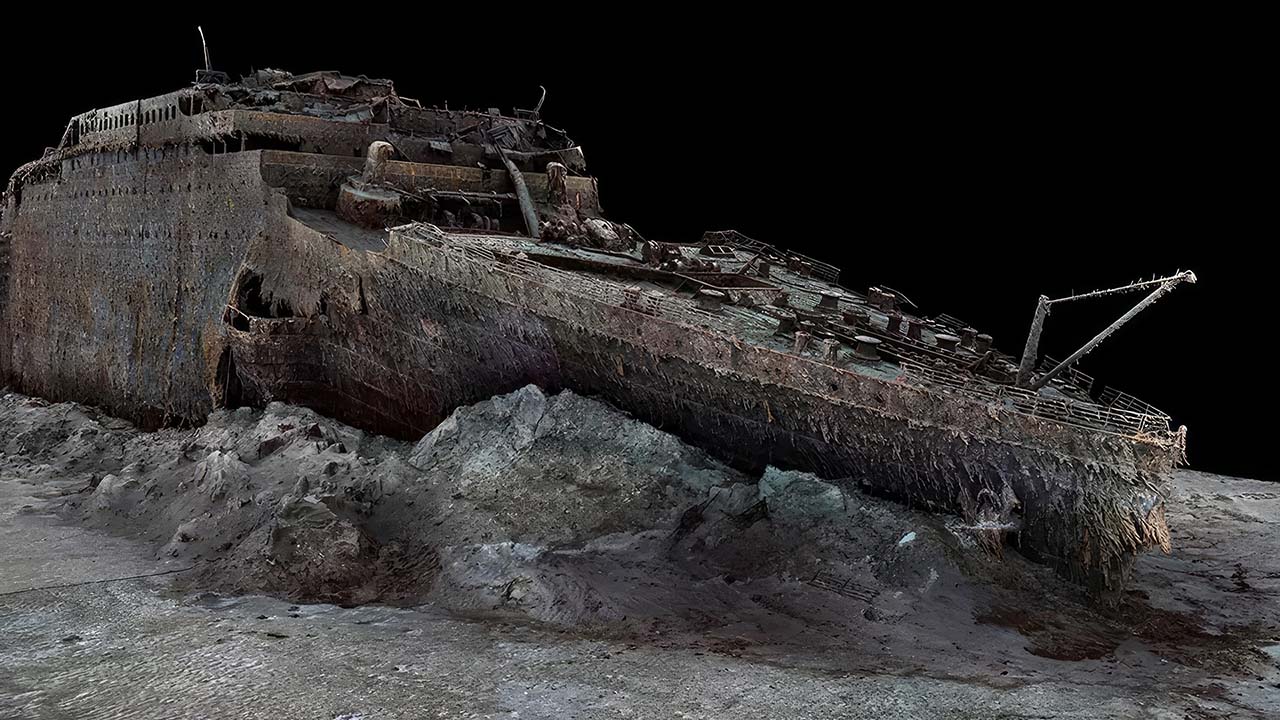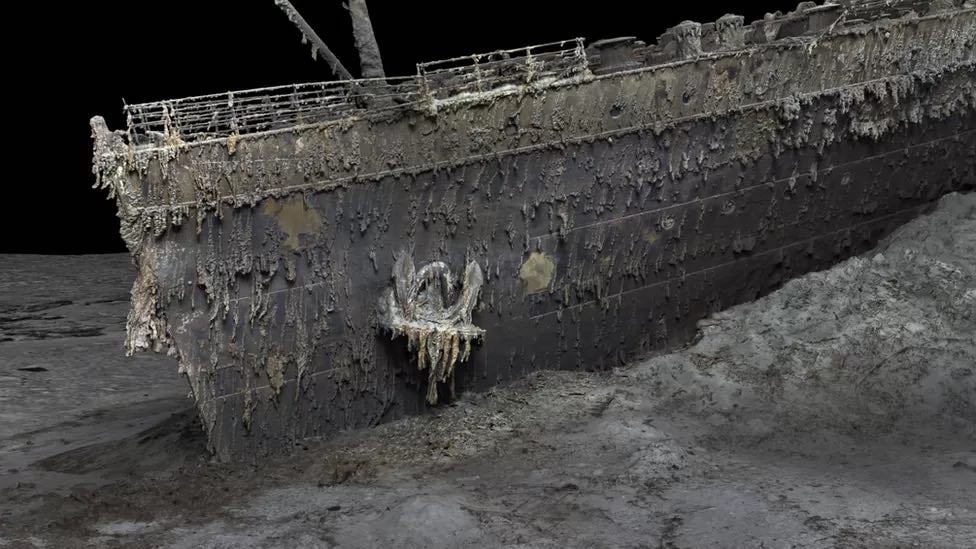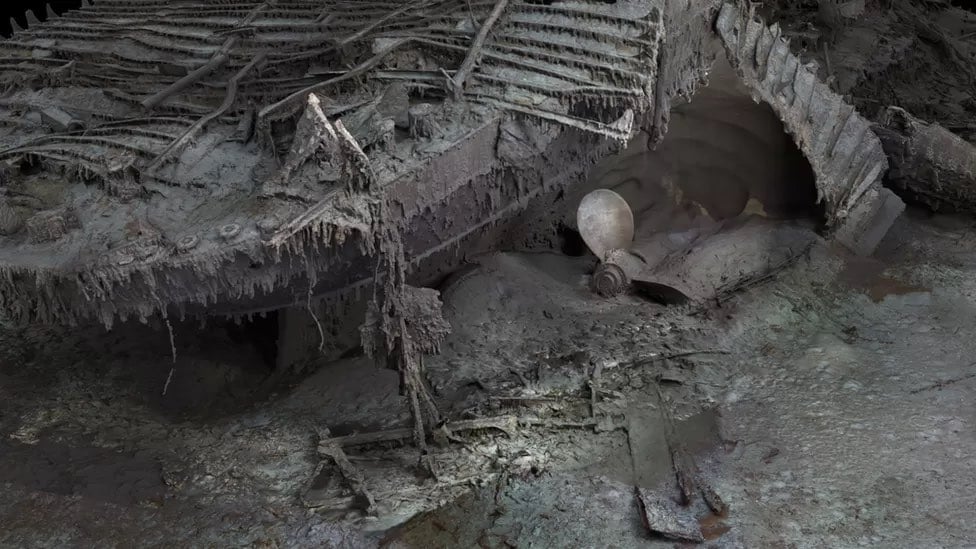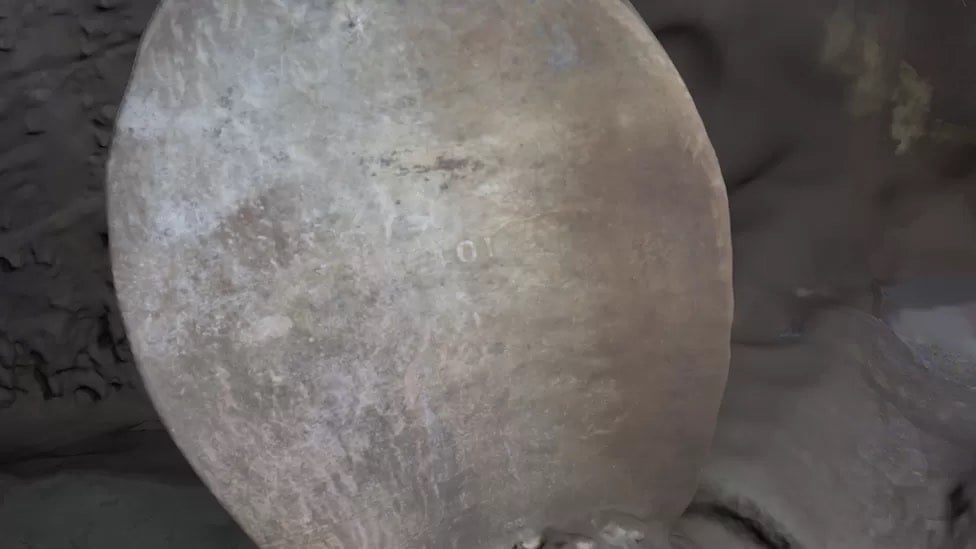
A recent collaboration between Atlantic Productions and Magellan has produced a 3D scan of the wreck of the Titanic that allows us to see it with unprecedented clarity and detail.
The wreck of the Titanic has been visited and filmed many times, ever since it was first discovered by the team of Jean-Louis Michel and Robert D Ballard in 1985. The wreck is a source of fascination for historians and the general public alike, although it is deteriorating quickly. Astonishingly, despite the amount of research about the vessel, footage taken of the wreck, and the accounts of eyewitnesses, it has never been fully established how the ship sank on that fateful night in 1912.
Yes, we know it hit an iceberg, but despite many common accounts of where the Titanic's hull was compromised, it has never been established 100%. Then there are the theories of how the ship broke in two. Again, despite eyewitness accounts, modern research is discovering much more about how the final moments of the vessel potentially transpired.

Image: Atlantic Productions/Magellan.
The story of the Titanic is one that is mired in mystery, as well as dogma. For instance, accounts of the way some of the crew behaved towards third class passengers, or how the lifeboats were deployed are now routinely getting debunked. A recent 3D scan, a collaboration between Atlantic Productions and Magellan, is now throwing new light on the plight of the ship, which currently sits 12,500ft (3,800m) below the surface, and it is already debunking some myths.
Last year, new 8K footage of the wreck was released by OceanGate Expeditions. The detail revealed by by the footage was unprecedented, but the problem with video cameras is that they can only ever show very small snapshots of the wreck at any one time. The murky water restricts how far we can see, so it has never been possible to show the ship in its entirety. The new 3D scan surpasses the capabilities of mere video by quite some margin. This is the first time the wreck has been scanned in its entirety, including the debris field, to a 1:1 ratio. In other words, the scan is such high resolution that it is even possible to see the serial number on the ship's propellor, or the many shoes that once belonged to passengers that now scatter the ocean floor.


The scan produced enough detail to be able to make out one of the propellors serial numbers. Images: Atlantic Productions/Magellan.
Parks Stephenson, a Titanic analyst, told the BBC that this is "one of the first major steps to driving the Titanic story towards evidence-based research, and not speculation."
The scan was produced in 2022 by Magellan Ltd, a deep sea mapping company in collaboration with Atlantic Productions, which is currently producing a documentary. It took the team over 200hrs, compiling over 700,000 images, resulting in over 16 terabytes of data to produce the final explorable digital twin. Stephenson went on to tell the BBC, "We really don't understand the character of the collision with the iceberg. We don't even know if she hit it along the starboard side, as is shown in all the movies - she might have grounded on the iceberg," The new scans could reveal new clues that have not been seen before.
In an interview with BBC Breakfast, Atlantic Productions Chief Executive Anthony Geffen pointed out that the detail is such that they are now able to match many of the personal possessions seen in the scan, such as necklaces, to individual passengers, making the project one that has a highly human aspect to it.
The story of the Titanic will continue to be one that fascinates the general public and researchers alike. It's one that has often thrown up many more questions than answers, but hopefully now the story of that tragic night may allow more pieces of the jigsaw puzzle to be put together.
Tags: Technology


Comments